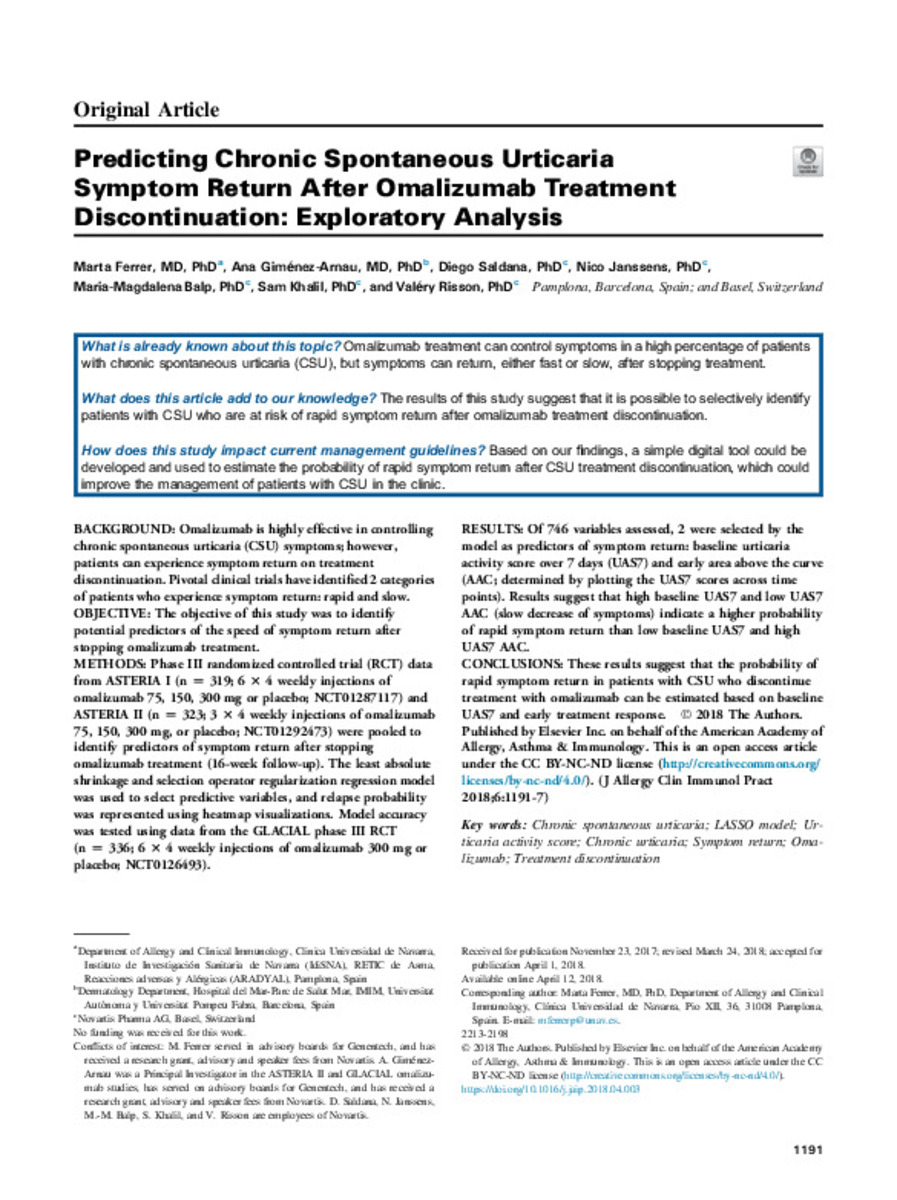Predicting chronic spontaneous urticaria symptom return after omalizumab treatment discontinuation: exploratory analysis
Keywords:
Chronic spontaneous urticaria
LASSO model
Urticaria activity score
Chronic urticaria
Symptom return
Omalizumab
Treatment discontinuation
Note:
This is an open access article
under the CC BY-NC-ND license (http://creativecommons.org/
licenses/by-nc-nd/4.0/)
Citation:
Ferrer, M. (Marta); Gimenez-Arnau, A. (Ana); Saldana, D. (Diego); et al. "Predicting chronic spontaneous urticaria symptom return after omalizumab treatment discontinuation: exploratory analysis". Journal of allergy and clinical immunology. In practice. 6 (4), 2018, 1191 - 1197.e5
Statistics and impact
0 citas en

0 citas en

Items in Dadun are protected by copyright, with all rights reserved, unless otherwise indicated.







